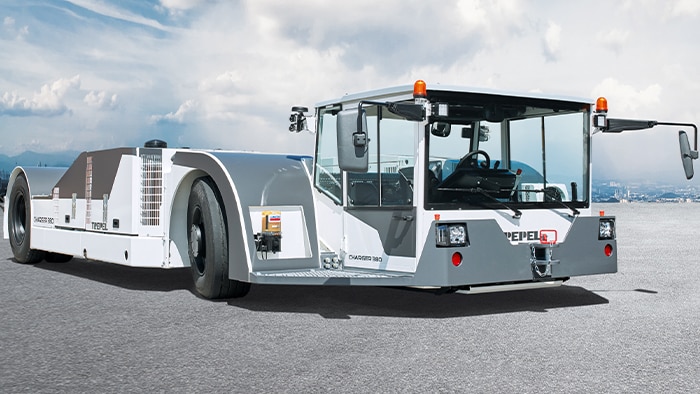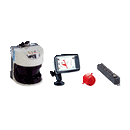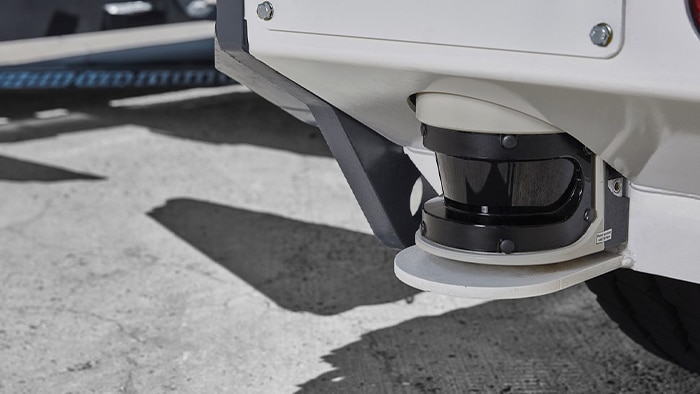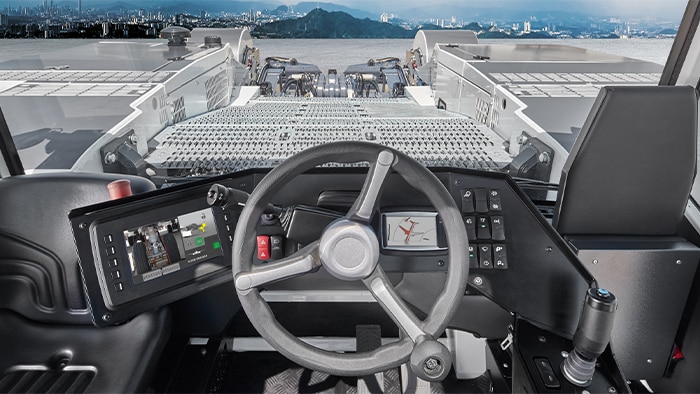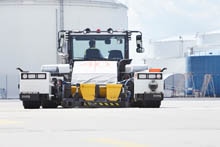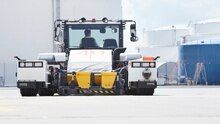Schedules are tight. The apron is crowded. And tractor drivers are constantly moving a wide range of aircraft. Today’s airports are a challenging setting for the tractor drivers who maneuver airplanes across the aprons, always aware that even a minor collision is extremely costly, both in terms of repairs and time lost. To effectively deal with these challenges, TREPEL Airport Equipment GmbH has come to rely on the APS (Aircraft Protection System) object detection system from SICK.
TREPEL moves even the largest planes with less stress for driver
Although airplanes have the ability to move around on the ground using their wheels like other vehicles, safety precautions dictate that they generally rely on tractors to reverse out of a parking spot. This is known as a pushback procedure, and it’s a difficult job that requires a lot of concentration. The men and women who maneuver the planes into and out of their docking positions have to contend with all kinds of objects on the aprons around the terminals and hangars. From having to navigate around airport infrastructure buildings, to keeping an eye on the buses, cars, trucks and unit loading devices and even other planes in the vicinity. And each time, these drivers move a different kind and size of plane.
A driver assistance system that warns the driver of possible hazards needs to be highly reliable. It needs to be flexible, always taking into account not only the different kinds of hazards, but also the different sizes and shapes of the planes being pulled, pushed and maneuvered. Given the size of planes, it also needs to reliably scan a very large area. There is no room for error here.
Moving from APS to TAPS
The APS (Aircraft Protection System) object detection system by SICK helps drivers of aircraft tractors move aircraft safely. It reduces the risk of collisions and accidents and can thus avoid high repair and breakdown costs as well as downtime.
Moving large, heavy loads safely and without blind spots
A towbarless tractor such as the CHARGER 380 scoops up the nose wheel of the aircraft so that its entire weight rests on the center of the tractor, giving the driver full control of the aircraft. The responsibility for the safe maneuvering of the aircraft is completely in the driver’s hands, which makes a reliable driver support systems so vital. The TAPS system uses a SICK LiDAR sensor to scan the entire area under – and around – the aircraft, ensuring that even the driver’s blind spots are fully covered.
Getting the right angle on tight turns with sensor-fed calculations
SICK and TREPEL engineers worked together to the develop the TAPS system. When a CHARGER 380 scoops up the nose wheel of an airplane, the TAPS system determines the landing gear geometry. With this information and its built-in database, it then suggests a number of possible plane types to the driver. The driver selects the correct one from the list on the display and confirms the selection. The system is now able to make exceedingly precise calculations on how close the aircraft is to objects in the surrounding area, giving the driver highly reliable warnings of possible danger zones. This reduces the pressure on the drivers and lets them concentrate on the actual maneuvering.
The system also delivers many other advantages. Based on information delivered by the LiDAR sensor, TAPS calculates the nose-wheel angle to a highly precise degree and supports the operator during maneuvering to avoid exceeding the maximum allowed value. This system function avoids oversteering the nose-wheel, which can lead to delays while essential checks are made to ensure that the nose-wheel has not been damaged. TAPS guarantees a safe and punctual operation. And during maneuver towing, operators can rely on a situationally adaptive warning strategy, as well as an automated fault detection and targeted maintenance – all made possible thanks to the system’s self-diagnosis capability.
Close cooperation magnifies great product value
All of this is possible due to the excellent collaboration between TREPEL and SICK. “There were continuous improvements thanks to the excellent way in which the engineers at SICK reacted to the feedback we gave them,” says David Bellavance, Research & Development Manager Towbarless Aircraft Tractors at TREPEL Airport Equipment GmbH. “This intense level of cooperation allowed us to continuously optimize the system in terms of its functions, the menus and even visually.”
SICK’s APS system has proved itself to be highly precise and reliable in many different settings, and the quality of SICK sensors is undisputed. But in the end it is SICK’s desire to work closely with their customers, to listen to their needs and their experience that makes the decisive difference.

